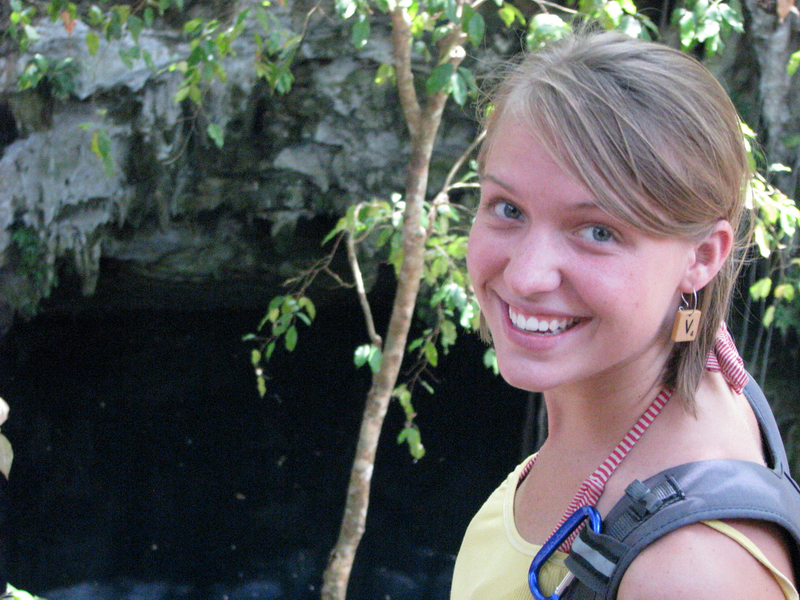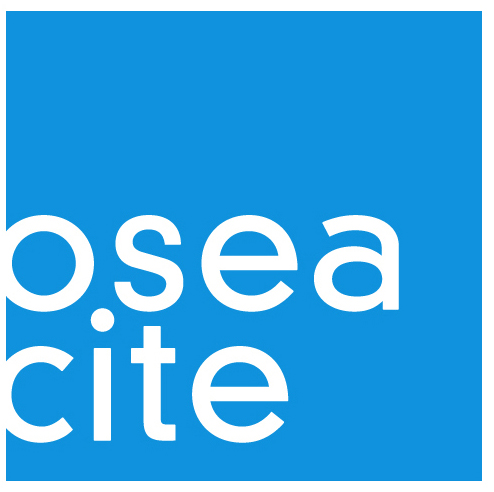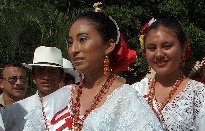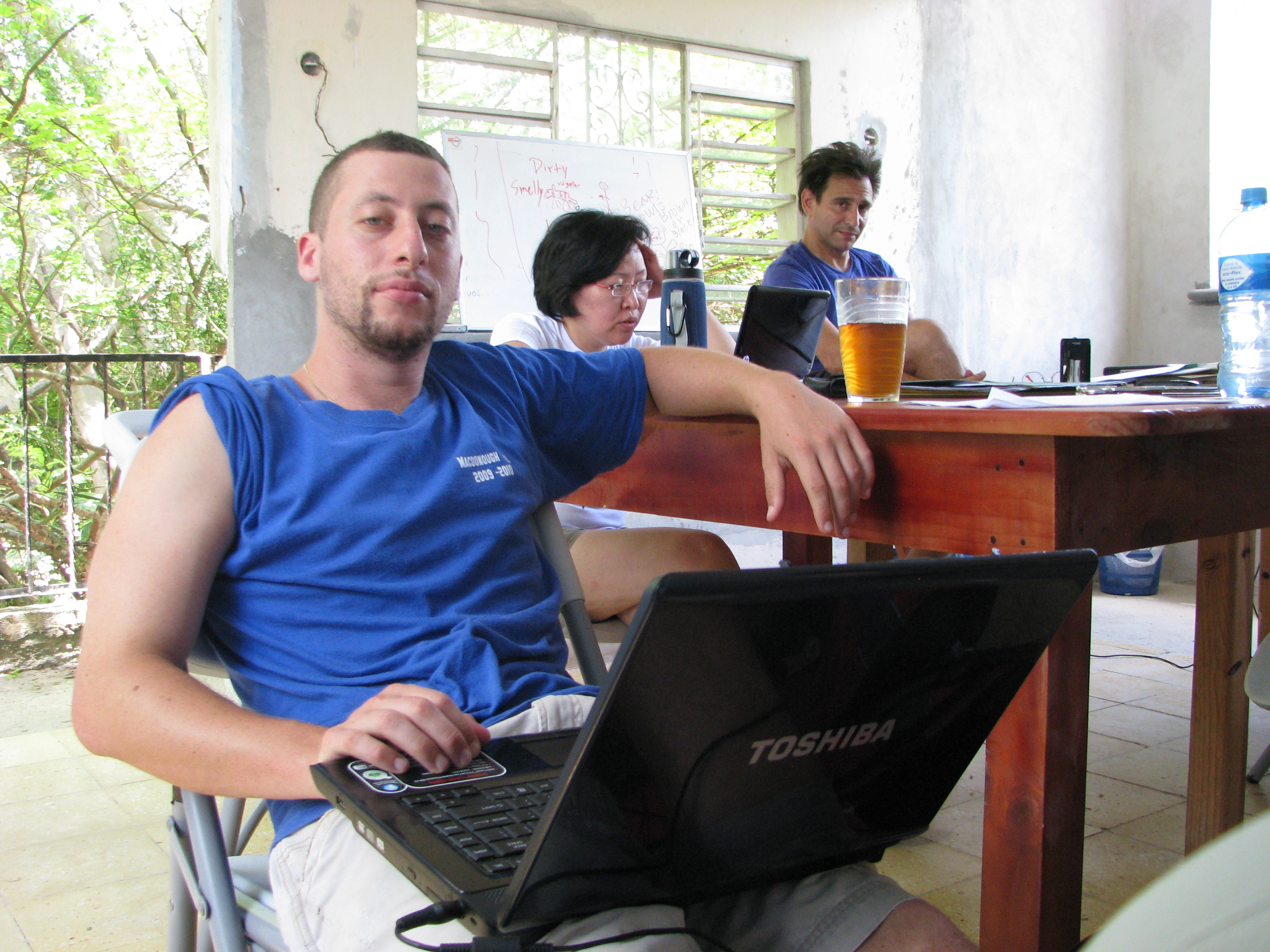|
2006 Student Evaluation for MIRA Field School
Meaning and Experience of SELT Teaching English Service Learning
Laurie Kovacovic, Comment
Lisa Porostovsky, Comment
2009 Student Evaluations
Summary of 2009 Student Evaluations
Selection of Comments from 2009 Field School Participants Student Testimonies. click here
Selecton of Student Comments (different years)
Staff, Teaching, Seminars
Home Stays, Cultural Adaptation, and Life in Pisté
Fieldwork and Research Projects
General Comments
Images from OSEA Programs
Winter Workshop with Dr. Juan Castillo Cocom (January 2005)

Staff, Teaching, Seminars
The respect and trust that exists between the students and staff is remarkable.
One of the best things about the field school was Quetzil’s respect for us and his expectations of us. We were treated as equals, and we were expected to respond to him, each other, and the people of Pisté as equals.
In one seminar session, Professor Castañeda was able to present an outline of different theoretical approaches which actually made sense to me. Not only did I learn about structuralism, post-structuralism, materialism, idealism, positivism, functionalism, and hermeneutics, but I understood the differences between these and how they were relevant to what we were doing.
What I most appreciated about the way in which all this material was presented, was that we looked at it critically, we looked at ourselves and what we were doing for examples and illustrations.
Quetzil’s teaching style is excellent, challenging.
As students, we took a great deal of satisfaction from our interactions
with the people of Pisté and from the responsibility and professional respect which we were given by the project staff.
I have to admit I was surprised, however, as I received more information I realized that the independent nature of the program could be daunting or confusing to an undergraduate. In truth I prefer more independence in my research.
top
Home Stays, Cultural Adaptation, and Life in
Pisté
Although I found myself in an environment as alien as any I had ever
been in and felt as “foreign” as I have ever felt, I can
think of few situations in which I was truly uncomfortable.
the village of Pisté. It is small enough so that nothing is
far, and the students begin to develop a sense of all the relationships
binding the town, yet lively enough to support a fun social life.
…the extreme kindness of my host family…from the very
first day, they were willing to help me learn Maya and discuss local
life and customs. They were equally interested in learning about my
life in the United States.
A very important realization I had while living with the family was
that the people of Pisté were conducting an ethnography of
their own through their questions and curiosity about the lives of
the students. Living and participating in a family environment allowed
me to blur the distinction between my ethnographic work and day-to-day
life.
This opportunity for immersion in local cultural life and full participation
in ethnographic research made the completion of our projects that
much more enjoyable.
While overwhelmed by the attention and the adjustment to the language,
I did not feel threatened despite my position as the target of all
these big eyes, fast mouths, and gesturing hands.
I was amazed by the generosity of the people of Pisté throughout our stay, accepting us into their homes, weddings, funerals, classrooms,streets.
Eventually I simply accepted the possibility and probability of being
misunderstood. Then the exchanges I had with people began to move
forward because we both were communicating in new ways. Talking became
much more of a pleasure, an unknown path taken with humor.
top
Fieldwork and Research Projects
As the plans for the projects developed, we concentrated on particular
tactics and strategies used to solve the research problem.
Also impressive is the hands-on application of ethnography in conjunction
with art, theater, language teaching, training and learning. The students
in this field school are exposed to a wide array of different arenas
of experience, yet these are all brought together and thoroughly explored.
Although the unpredictable nature of the fieldwork requires a great
deal of flexibility, it would also be helpful for students to have
a fuller awareness of project requirements in advanced.
Here we were able to implement the experimental methodological practices
which we had learned such as double sensation, evocation, transculturation,
and ethnographic triggers. These all recognize our presence and the
other’s presence, together in contact. From the contact, we
were both witness and agent in the continued emergence and changing
of culture.
Instead of trying to document culture as it was at one instant, our
preoccupation was in the change itself, in recognizing the exchanges
and not trying to make our presence, which was undeniable, a mere
suggestion, but an acknowledged event. We used these methods in every
aspect of the field school, amongst ourselves, with our friends in
Pisté, with everyone, for these are really the practices of
normal human contact which occur regardless of whether or not you
are wearing the cloak of an ethnographer.
Instead of only producing a textual summary, we also constructed photographic
essays, filmed video for display, both of which show us in exchange,
with cameras, with tape-recorders, observing, being observed. These
media helped expand the description, make it “thicker”
as Geertz says. But they do more than portray a rich description of
a moment with multiple perspectives, they show a continuation of exchanges,
a process with no beginning, no end.
All of these accounts show only glimpses, but together they interact
to raise questions about who is influencing whom, and who is observing
whom, and how these influences and observations are triggering the
continued creation of culture.
There are photo essays which show the artists, their work, the ethnographers,
our interviews, our tools of documentation, their tools of artistry,
us using their tools, learning to carve wood, their using our tools,
learning to speak English, etc. There is video footage which shows
these exchanges as well.
top
General Comments
The students are challenged to immerse themselves in ethnography, in the local culture, with their host families and new friends, yet there is always academic and personal support from the staff and other students of the field school.
Students will not only get their feet wet playing with ideas, but they are encouraged to dive in and truly explore their emerging visions.
The Field School in Experimental Ethnography has been and will continue to be a wonderful, wonderful thing.
top
|




